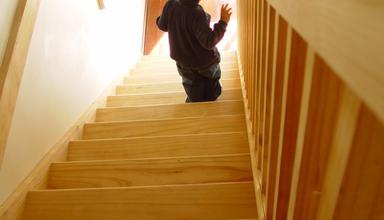This article has been written by Dr Lucy Griffiths and Professor Gareth Stratton from Swansea University under Senedd Research’s Academic Fellowship Scheme. The article reflects on the work of the Health, Social Care and Sport Committee’s inquiry into ‘Physical Activity of Children and Young People’.
Insufficient physical activity is a key risk factor for noncommunicable diseases such as cardiovascular diseases, cancer, chronic respiratory diseases and diabetes. For children and young people, insufficient activity can also have harmful consequences related to development, self-esteem, motivation, confidence, academic attainment and wellbeing overall. Increasing population levels of physical activity would therefore help shape Welsh Government’s ambition for a Healthy Weight: Healthy Wales.
To this end, the Assembly's Health, Social Care and Sport Committee recently published the report of its inquiry into 'Physical Activity of Children and Young People' (PDF 0.99MB). This report details the current state of play and makes 20 recommendations for reducing physical inactivity in children and young people across Wales. One of these calls is for an “agreed national measurement framework for physical activity levels and fitness as a matter of priority, to standardise and improve data collection” (Recommendation 1). Here we further discuss the justification and importance for this, and recommendations for such an approach.
How active should children and young people be?
In 2011 the four Chief Medical Officers (CMOs) of England, Scotland, Wales and Northern Ireland issued guidelines on the amount and type of physical activity required to promote good health. Children and young people aged 5–18 are encouraged to:
- engage in at least 60 minutes of moderate- to vigorous-intensity physical activity every day;
- incorporate vigorous intensity activities, including those that strengthen muscle and bone, at least three days a week and
- minimise time spent being sedentary (sitting) for extended periods.
Physical activity should also be encouraged in younger children, i.e. from birth to 5 years, particularly through floor-based play and water-based activities in safe environments, whilst pre-school age who are capable of walking unaided, should be physically active for at least 180 minutes daily. Time spent being sedentary should also be minimised in this age group.
It is therefore particularly important that children and young people are offered opportunities to develop control, coordination and movement, that they are told about the benefits of being active, and that they are exposed to a variety of activities. This will foster competence, confidence, enjoyment and motivation to be active - all essential requirements for physical literacy and engagement in a range of activities throughout life.
How active are children and young people?
Unfortunately, many children and young people are insufficiently active, with girls significantly less active than boys; a general decline is also observed in activity levels from mid-childhood into adolescence.
The 2018 Active Healthy Kids Wales (AHK-Wales) Report Card emphasised the scale of this problem nationally, with only a third of 3 to 17-year olds’ meeting activity guidelines and many accumulating too much sedentary activity.
Physical inactivity is not confined to Wales, or to the United Kingdom more widely. Global comparative estimates from 2010 indicate that worldwide, 81% of adolescents (aged 11–17 years), and 23% of adults, do not meet the World Health Organization (WHO) global recommendations on physical activity for health. A WHO global action plan to promote physical activity has been published and a target has been set to achieve a: ‘15% relative reduction in the global prevalence of physical inactivity in adults and in adolescents by 2030’. Wales needs to continue to build on this global momentum to reduce inactivity.
Current surveillance methods
In Wales, there are two nationally representative surveys which capture children and young people’s physical activity indictors: The Health Behaviour in School-Aged Children Survey, and the National Survey for Wales. Information from these surveys, and the School Health Research Network and Play Sufficiency Assessment Surveys, contributed to the AHK-Wales Report on levels and trends of physical activity. The Report acknowledges that it could only use “best possible” information and called for more robust evidence.
School-based surveys also provide helpful information. Swanlinx, for example, which is integrated into the HAPPEN Healthy Schools Network in south Wales, provides data on the health, fitness, diet, lifestyle and well-being of children aged 9-11. To date, around 40 schools have taken part. Secondary school data is collected through the School Health Research Network, with around 211 schools currently involved. However, the biggest such survey in Wales is the School Sport Survey, with over 1000 schools taking part in 2018. These surveys help us to build a picture of who is doing what, and how long for.
Future directions
The Health, Social Care and Sport Committee report calls for urgent action to address gaps in data on physical activity levels in childhood. It identifies the need to strengthen Wales’ population surveillance of physical activity to enable progress towards targets, and effectiveness of related public health interventions, to be assessed.
To facilitate this, professionals and academics involved in health surveillance should:
- use appropriate measures for all dimensions of movement, activity and sedentary behaviour;
- develop and test innovative and new device-based measures to strengthen surveillance in feasible and affordable ways;
- seek ways of integrating sensor and survey data together; and
- harmonise survey methods between the home nations to enable comparisons in activity levels to be examined.
Academics involved in measuring activity levels of children and young people should also consider integration of data collection as part of a learning process; data that can be shared has utility for schools, children and parents.
A 2019 update on the physical activity recommendations is forthcoming following a recent CMO-commissioned review of current evidence . These movements will help shape strategies and initiatives for more robust data collection and help make Wales a more active and healthier nation.
Article by Dr Lucy J Griffiths and Professor Gareth Stratton, Swansea University.
Senedd Research acknowledges the support of Swansea University that enabled Dr Lucy Griffiths to take part in this fellowship.






